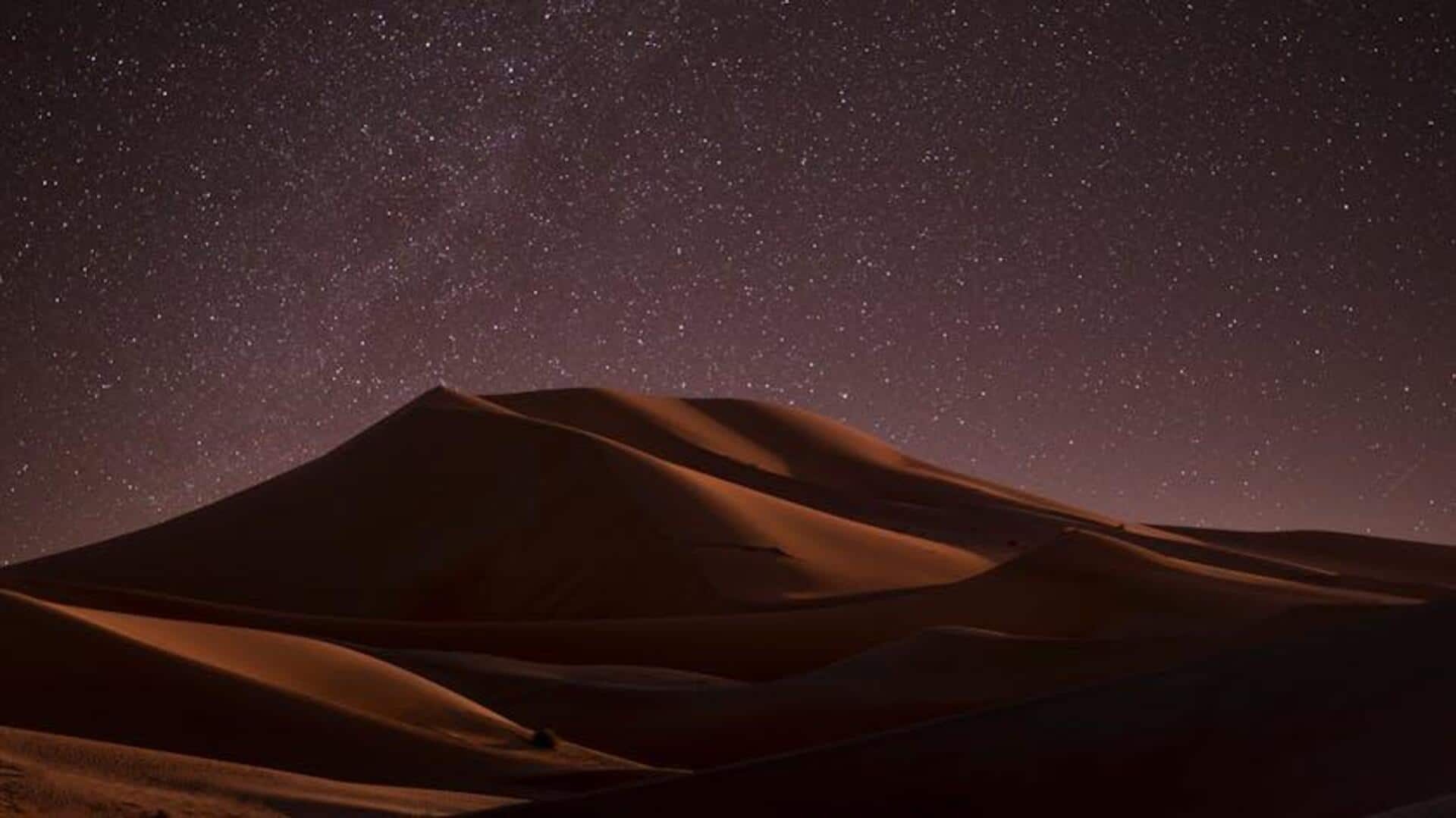
Stargazing in the Kalahari Desert
What's the story
The vast expanse of the Kalahari Desert, stretching across multiple countries in Southern Africa, holds a special allure for stargazing enthusiasts. Its remote isolation, a world away from the intrusive glare of light pollution, provides a near-perfect canvas for the celestial artistry of the night sky. This article delves into the unique experiences of desert astronomy and stargazing in the Kalahari.
Timing
Choosing the best time to visit
The optimal time for stargazing in the Kalahari is the dry season, spanning April to September. This period offers cloudless skies with exceptional clarity, allowing for uninterrupted views of the Milky Way and other celestial wonders. Additionally, cooler nighttime temperatures during the dry season enhance comfort for those spending hours under the stars.
Location
Selecting a stargazing spot
In the remote reaches of the Kalahari Desert, some areas stand out as truly exceptional for stargazing. The Central Kalahari Game Reserve offers an unrivaled experience, with virtually no light pollution to hinder the breathtaking views of the night sky. Kgalagadi Transfrontier Park is another gem. Here, you can embark on guided night drives, providing a thrilling opportunity to spot wildlife under the vast starlit canopy.
Gear
What to bring for your adventure
To make the most of your stargazing experience in the Kalahari, you'll need to pack a few essentials. A good telescope is key - it will let you see distant stars and galaxies like never before. Bring a star map or use an astronomy app on your smartphone to identify constellations and planets. And, of course, pack warm clothing. Deserts can get surprisingly cold at night.
Education
Learning opportunities and guided tours
Many lodges and tour operators in the Kalahari offer guided stargazing tours conducted by experienced guides or even astronomers. These tours not only educate you about the constellations visible from the Southern Hemisphere but also introduce you to the ancient astronomical knowledge of the local San people and their rich folklore associated with the stars.
Advice
Tips for amateur astronomers
If you're new to desert astronomy or stargazing, start with the basics: your eyes (or binoculars if you have them) can be powerful tools for simple observations. Try to identify major constellations visible during your visit before moving on to more complex observations with telescopes. Be patient as your eyes adjust to the darkness. You'll start to see more stars than you initially thought were there.